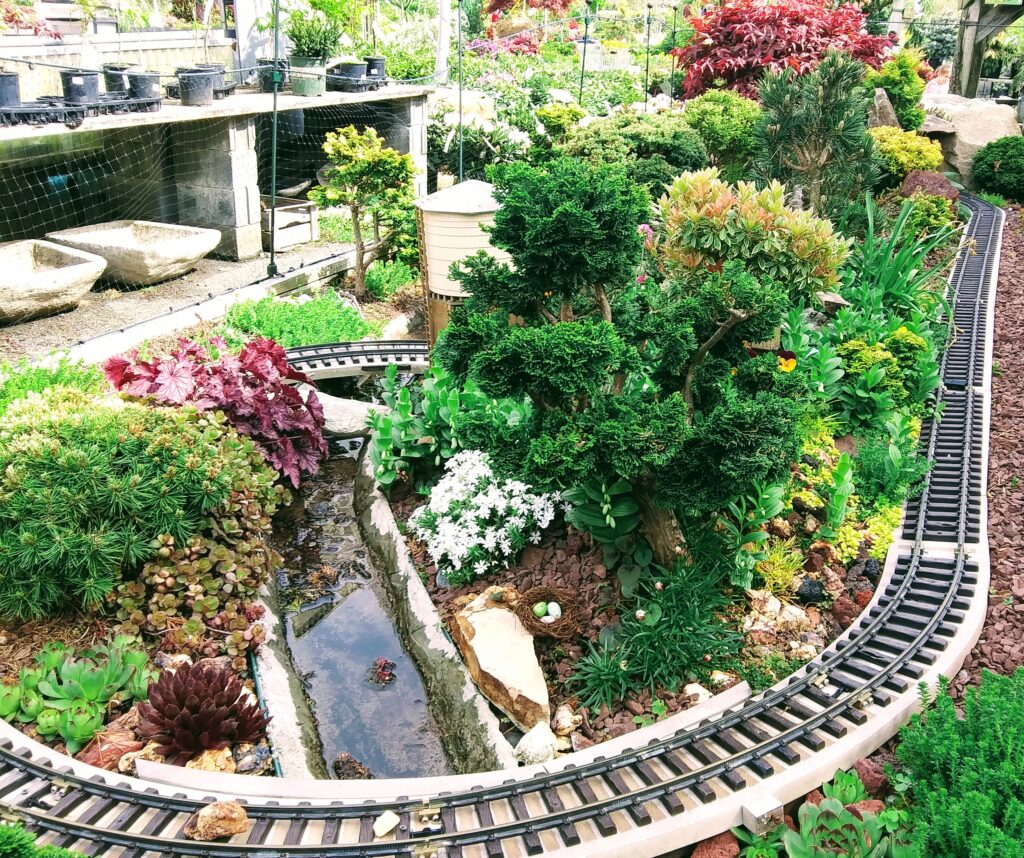Today I attended a video lecture on making miniature gardens given by Peg Bier.
I love Peg’s classes because I always learn something new. Although I’ve never met her, she almost seems like a friend giving out helpful gardening tips.
Making a Terrarium
Today’s topic on making miniature gardens made me think back years ago when I decided to make a large fish bowl into a terrarium.
Initially, I saw some terrariums in a store consisting of large fish bowls with layers of gravel and sand . The terrariums had some moss, a small fern, or some type of succulent growing in them along with a tiny decorative woodland animal. I could do this, I thought, but really had no idea about how to make a terrarium or the care of one.
Terrarium Troubles
First of all, in making a terrarium, it was difficult to get the plants and gravel in the fishbowl in without getting the glass dirty. Also, I never thought to use any dwarf varieties of plants.
But my biggest mistake, however, was giving the plants too much water and my terrarium flooded.
Of course, there is no drainage in the bottom of a fish bowl so things were quite soggy. There was no way to remove the water unless the fish bowl was turned over.
Apparently, the gravel in the bottom of the terrarium was to absorb the water but it, also, had be to watered sparingly.
Needless to say, the plants in my terrarium did not flourish or last too last long.
Miniatures Gardens
Miniature gardens are like terrariums because are great for people who love to garden but don’t have much space.
For miniature gardens it makes sense to use miniature or dwarf plants and trees.
Tips for Planting Miniature Gardens
- Color – Use Matching and Contrasting Plants
- Texture – Find dwarf plants and trees with Interesting textures
- Form – Think about what you want to say about your garden
- Needs of the Plants – Do the plants need lots/less of water or sun.
- Drainage – Miniature gardens need excellent drainage due to their shallow roots. Also, keep crocks off the ground to allow for good drainage.

There are a variety of dwarf trees around this mini train track.
Peg’s lecture included photographs of her miniature gardens mainly in crocks. Great plants for miniature gardens are mounding dwarf cypress, dwarf forsythia, dwarf hostas, creeping thymes, oriental pine, dwarf holly, hens & chicks, Scottish moss, Japanese maples and Irish moss.
Today’s miniature garden program, also, talked about using and making hypertufa pots which look a little like gray stones. Hypertufa makes attractive containers for miniature gardens and helps with drainage.
What is Hypertufa?
Hypertufa is a light weight, porous material made into crocks and planters and looks similar to sandstone.
Hypertufa is made from Portland cement, sand, peat moss, vermiculite, and perlite with fiber mesh to hold things together.
After the hypertufa mixture is made, pots are formed in some type of mold. The pots need to cure for at least a months’ time, so winter is a great time to make hypertufa pots for spring.
Hypertufa crocks can also be purchased at some garden centers.

Dwarf trees and plants around a train track and water tower. There looks to be a couple of hypertufa pots on the bottom shelf of the crocks in the background.
Ending Gardening Notes
Miniature gardens are anything you want them to be from enchanting mini gardens to teach children the joy of gardening, to growing dwarf trees and shrubs.
Get creative with your miniature garden and don’t forget to take time to enjoy the day.
Resources for today’s blog includes Peg Bier’s video lesson on Miniature Gardens, Wikipedia, and gardenknowhow.com.
A big thank you to Merrifield Garden Center for allowing me to take photographs at their store and use them on today’s blog. Merrifield Garden Center also carries a supply of hyperturfa crocks.

